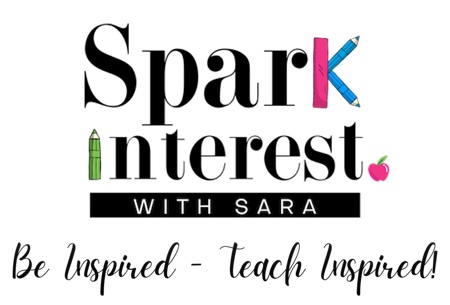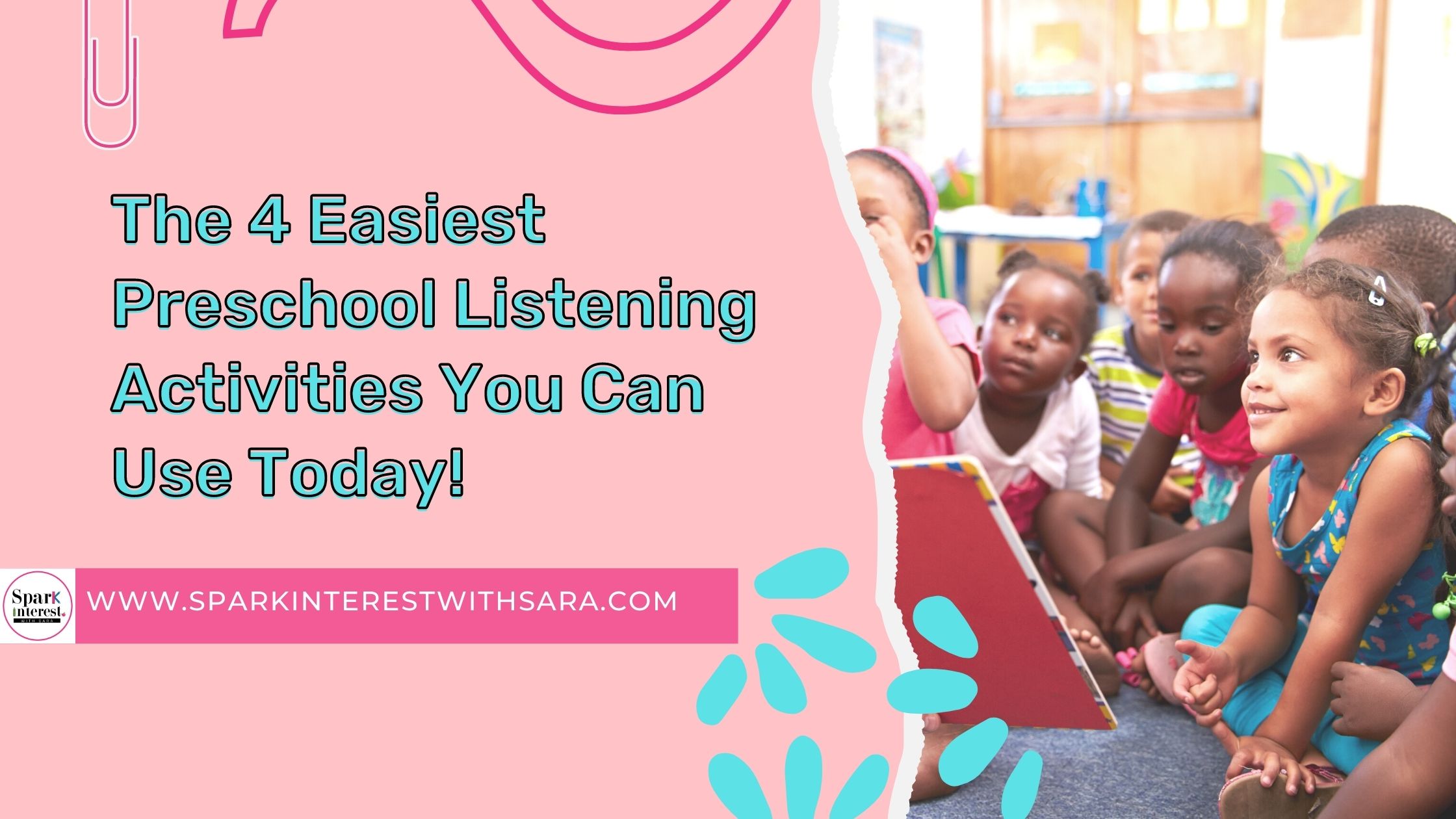
What do we mean when we ask our preschoolers to “listen”? There are probably a million different ways we can look at this. Can you hear my voice? Can you look at me? Can you hear my words? Can you block out what’s happening around you? Can you understand the meaning of the words I’m using?
We expect students to follow verbal directions at the preschool level, so developing the skills needed to follow those directions is a big deal. We also expect students to listen to each other and to process information spoken to them. But how can we do this?
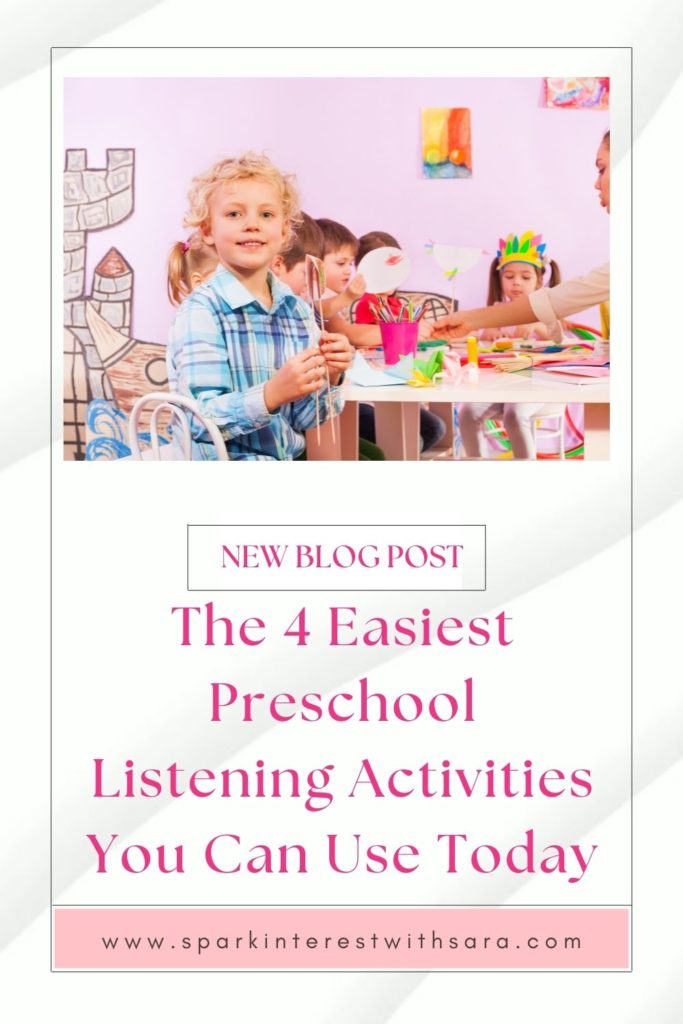
How to develop listening skills?
Developing listening skills in children is challenging. We want our preschoolers to be able to listen to instructions, listen to their peers and listen to stories, and process information. Like all skills, listening needs to be developed with intentional activities.
Here are some important aspects you need to know about developing listening skills and some activities your preschoolers will love!
What is whole-body listening or active listening?
Whole-body listening or active listening is a way to help students understand what their bodies should be doing when they are listening. I like to remind teachers it is a tool and not a rule. Some of our kiddos will not always be able to follow all of the suggestions at first but with practice and repetition they will know what to do.
Some of the important parts of whole-body listening are:
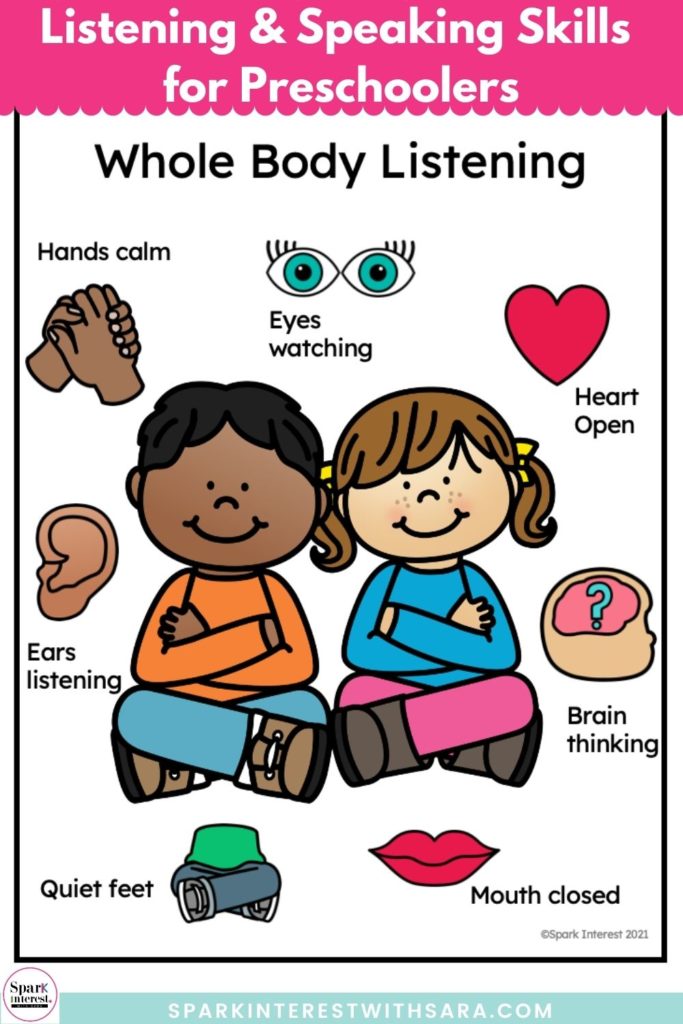
- Eyes are looking
- Mouth is quiet
- Brain is thinking
- Hands are to myself
This body language lets the speaker know the students are listening and will be able to respond if they are asked to. There are many reasons why teaching this skill is essential. It helps the child block out any unnecessary sounds or noise from the classroom or world around them. This makes it easier for them to pay attention to what they need to hear. It can also block out distractions from their own physical body. They also will gain better relationships with people if they show them they care about what is being said. This tool will help students with their effective listening skills.
What is active speaking?
Active speaking is another skill students need to learn at the preschool level. This type of speech can be challenging for little learners because preschool is often the first time their speech is being regulated.
Some important parts of active speaking are:
- Think before you speak
- Use different levels of voice
- Take turns while speaking
It is easy to teach both whole body listening and active speaking simultaneously because they go pretty much hand in hand. You can teach each skill using small groups or partners first and then move into the whole group. Teaching both whole body listening and active speaking helps students with their communication skills.
You may use listening and speaking posters or other visual cues to remind your students what active listening looks like. Place it where you hold group times so that it is always there to remind them what behavior is expected of them.
Before I move on to sharing some preschool listening activities I use in the classroom, I wanted to make sure you have downloaded my Kindness Scenario Freebie. It’s an excellent resource to add to your kindness curriculum.
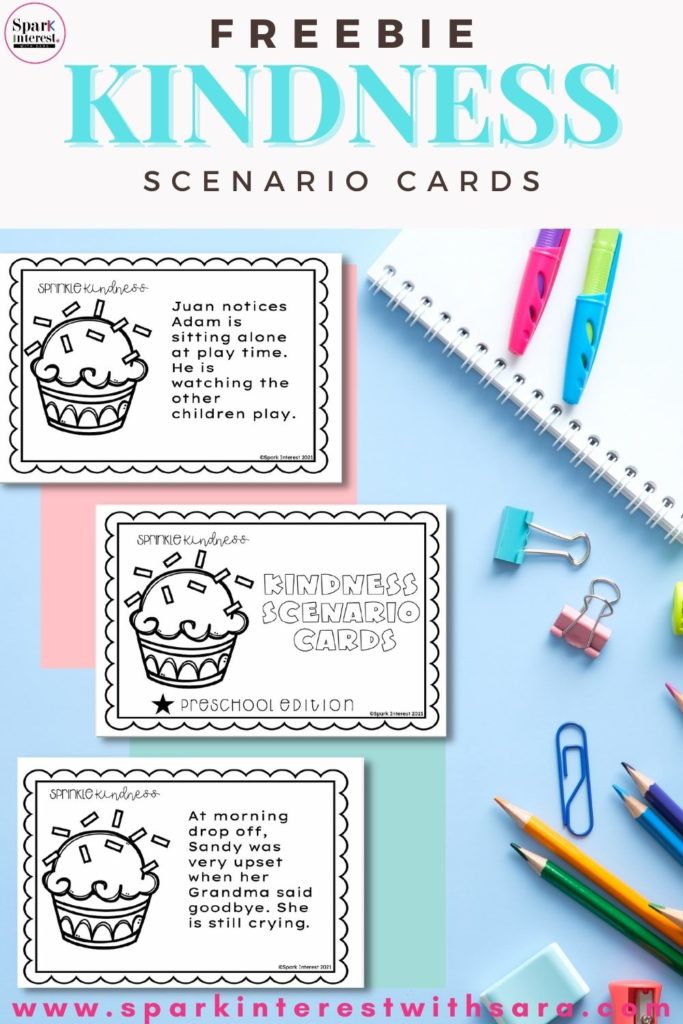
Preschool listening activities
The 4 main ways I use to encourage better listening in my classroom are:
1. Play listening games for preschool
Every preschooler loves a good game! Play a game related to the skill you want to teach and you will get your young learners engaged and participating!
These are just a few of my favorite games I use in my classroom, and I have seen students who have poor listening skills improve dramatically after these games and lessons.
Thumbs up or thumbs down
This game is based on a simple concept. Thumbs up means agree, while thumbs down means disagree. The teacher says a statement, and the children put thumbs up if it is true or thumbs down if false. You can use straightforward sentences such as “I have brown hair” or “I enjoy watching cartoons.”
Pass the story
This game is not only a great listening and communication activity, but it also practices some reading skills such as story elements and retelling. The teacher starts a story, and as students move around the circle, they add to the story using what the students said before them as a starting point.
Simon says
A common game from our childhood also makes a great listening game. One person is “Simon,” and they give directions to the listeners, such as, “Simon says tap your forehead.” If they do not say, “Simon says,” the listeners are not supposed to perform the action, and anyone who does is technically out.
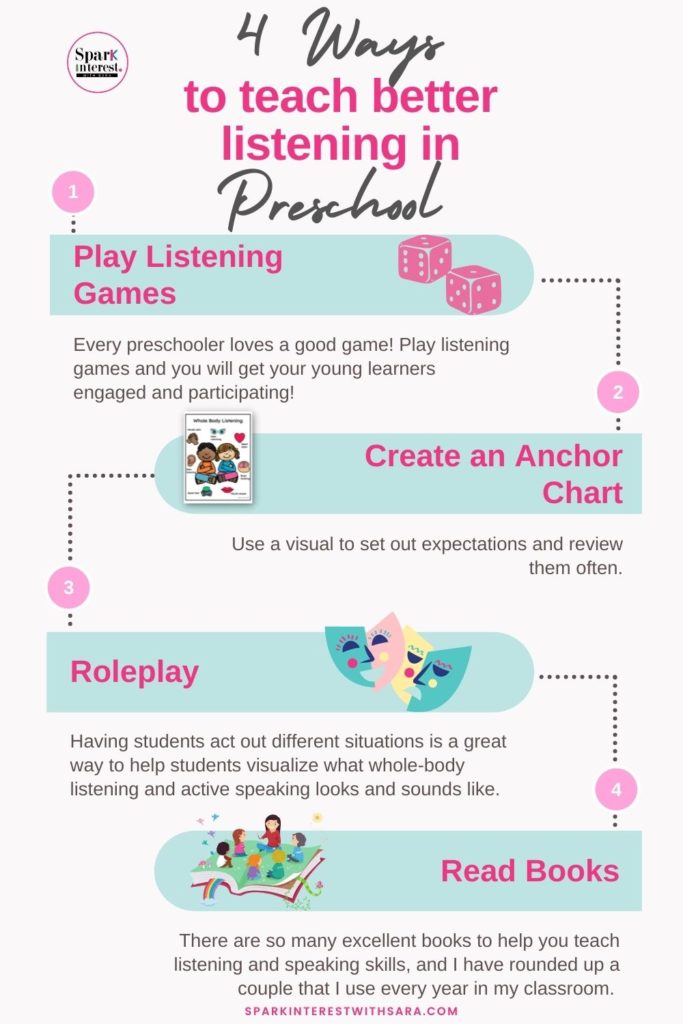
Red light/Green light
One person calls out “green light,” and each player steps forward until “red light” is called out. When they hear “red light,” all players must freeze. Whoever gets to the caller first wins. Along with Simon Says, Red Light/Green Light can get a little loud and crazy, making them even more important.
Funny whispers
One of my absolute favorite games that usually end up being very funny and has all of the teachers and students laughing! Pass a funny message around the circle & see if it comes back the same. This game helps with listening skills and speaking skills, helping students speak clearly so their peers can understand what the whisper is.
Listen & color/draw
One student has a colored picture and gives instructions to the other student on what to draw/color. There is no peeking at each other’s pictures till the end, and the other student draws/colors, and they compare the picture at the end. You can also complete this type of activity with a directed draw. There are so many directed draw instructions on YouTube or teacher websites! I love directed draws because they are specific, and you can easily see who needs a little more help with listening skills than others.
2. Create Anchor Charts
Create a classroom anchor chart or put up posters to set expectations, and remember to review them often with students. Visuals are helpful for students no matter their age, and they will give kiddos something to look at and remind them of what whole-body listening and active speaking look and sound like.
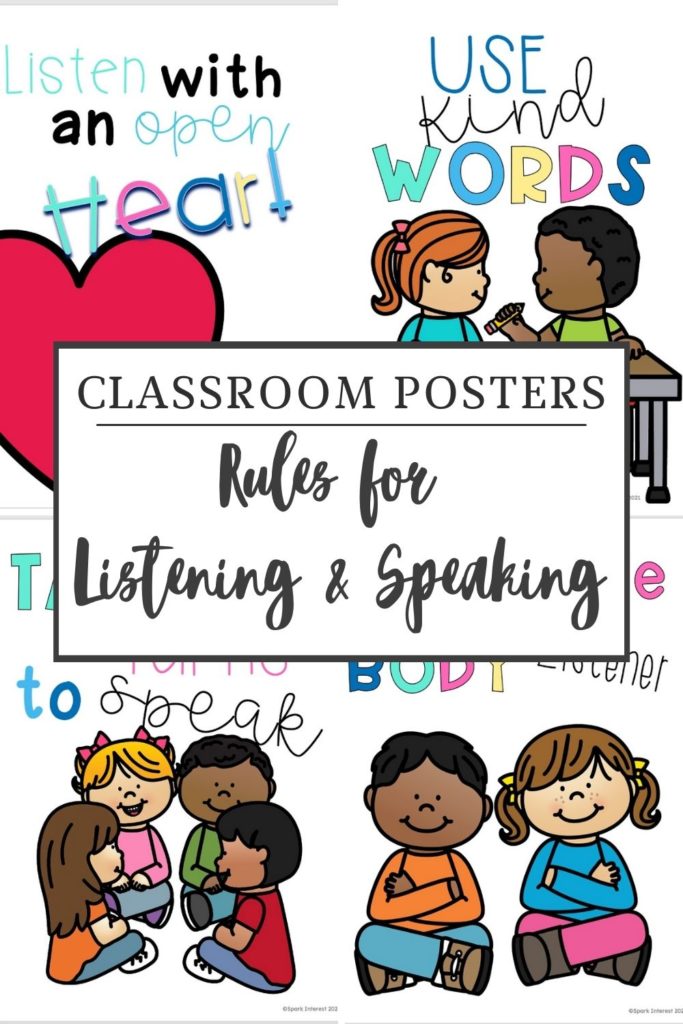
3. Roleplay
Having students act out different situations is a great way to help students visualize what whole-body listening and active speaking looks and sounds like. One activity I often play with my students is fun with sentences. You say a sentence in different ways (angry, happy, sad, etc.), and your students can try to guess what emotion you are acting out. It is a great way to discuss how you say something can change its meaning. Be sure to exaggerate your emotions; my students often get such a laugh out of it but it sure does get the message across!
4. Read books to teach listening skills
Books are the best teachers! There are so many excellent books to help you teach listening and speaking skills, and I have rounded up a couple that I use every year in my classroom.
Quiet Please, Owen McPhee! – Patrice Barton
Owen McPhee LOVES talking. He spends every minute of his day talking to his teachers, classmates, parents, dog, and even himself. But he is not the best at listening. One day he gets laryngitis and realizes he may need to listen more! She is also the writer of The Invisible Boy, a fantastic book that helps teach empathy.
Wordy Birdy- Tammi Sauer and Dave Mottram
Wordy Birdy is a talker. “Hello, sunrise. Hello, pink sky. Hello, orange sky!” The last thing she enjoys is listening. But, her talking quickly gets her into danger, and this inattentive bird may walk into trouble, and her thoughts may lead her to doom. Only her friends Squirrel, Raccoon, and Rabbit can save their distracted friend.
The Rabbit Listened- Cori Doerrfeld
When something sad happens, Taylor doesn’t know where to turn. She turns to her animals, and they all have different ways to help her feel better. The chicken wants to talk it out, and the bear thinks Taylor should get angry. All the animals try to tell Taylor how to act, and one by one, they fail to offer comfort. Then the rabbit arrives. All the rabbit does is listen, and that is what she needs.
My Mouth Is Volcano- Julia Cook
Sometimes kids can not control their voice, and Louis interrupts constantly! He has to share his thoughts, but he doesn’t realize how sometimes you need to take turns. When friends start to interrupt Louis, he learns to be more respectful with his voice.
Howard B. Wigglebottom- Howard Binkow
A book where a bunny helps kids learn how to be a better listener, pay attention, and how this means more than doing what they are told. A bunny helps millions of children learn listening skills.
How to develop listening skills in students
These activities will help your students with whole-body listening and active speaking. As any preschooler teacher knows, listening is a skill some students master quickly, and others need more patience and practice! Try out these preschool listening activities and do let me know how you get on! I’d love to hear from you!
Here are some fun online preschool listening activities:
Looking to bring more heart-centered teaching into your preschool classroom? Check out these blog posts below ????????
????The 4 Main Reasons Why Teamwork Activities for Preschool are so Important
????13 Brilliant Books to Help Teach & Develop Empathy in Your Classroom
????11 Books on Friendship for Preschool Children You’ll Absolutely Love
Let's Connect:

Sara
